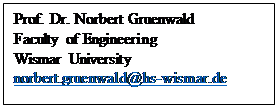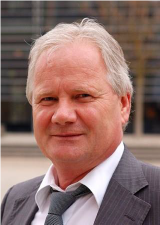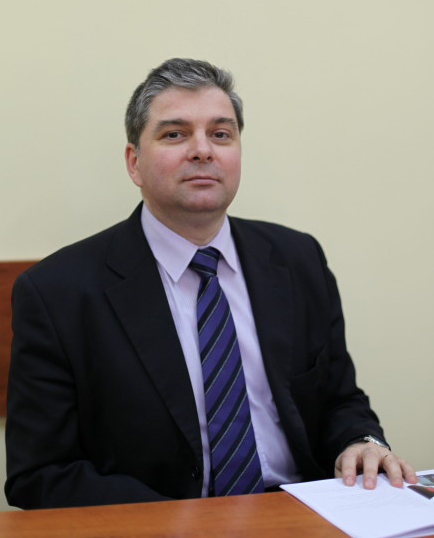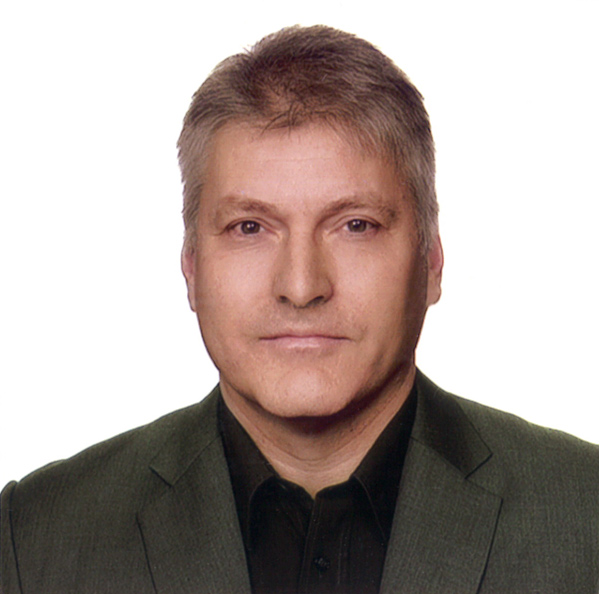Keynotes
Dr. Ronny Adhikarya - Dr. Anca Draghici - Dr. Norbert Gruenwald - Dr. Stelian Brad - Nina Mapili Dr.Iring Wasser
Synopsis of a KeyNote Presentation on:
"Penta-Helix Edupreneurial Mindset for the Age of Social-Economic Disruptions,
Hoax Communication and Augmented Intelligence".
By: Dr. Ronny Adhikarya *)
In my last Keynote Address to the 2016 International Conference on Engineering & Business Education (ICEBE) in India, I suggested the “Quadruple-Helix” concept to ensure market-demand relevance and cost-effective management for Universities or Learning Organizations. For this conference, an update is suggested:
a Penta-Helix Edupreneurial Mindset for the Age of Social-Economic Disruptions, Hoax Communication and Augmented Intelligence, as explained below.
The “Quadruple-Helix” model for K-economy & innovation development should be considered in the context of a Knowledge-based Society & Democratization affected by CSM (Cloud, Social Media and Mobile) technologies, and the competitive GloCal (GLObal Vision/Trends, LoCAL Adaptation/Action) market-place which requires different and new mind-sets, competencies & skills.
It needs strategic collaboration and partnerships among (i) University, (ii) Industry/Private Sector, (iii) Government/Public Sector, and (iv) “People/Community-based Initiatives/Inputs (e.g., through mass & social media-assisted Crowd-Sourcing and Crowd-Funding, etc.).
In today’s “Flat World” Age and CSM (Cloud, Social Media and Mobile) Decade, the competitive “GloCal” K-Economy & Society will need new competency profiles for human resource. Especially for the Millennial Generation, to maximize the potential impact of the Demographic Dividends, those in age-cohort of 15-25, need timely and appropriate learning experiences that will be relevant in the 2020 decade!
One of such needs is to prepare human resources to work for new types of enterprises which are considered as industry “DISRUPTORS”, such as UBER, NETFLIX, AIRBNB, TESLA, AMAZON, PAYPAL, KICK-STARTER, etc. Such innovative “Disruptors” have radically changed many GloCal business strategies, management & operational practices worldwide requiring new types of trained personnel who are still rare and in short supply, esp. for online, and new “shared-economy”, enterprises.
It is a challenge for educational institutions to provide relevant learning programs for these TGIF (Twitter, Google, Instagram and Facebook) and/or FANG (Facebook, Amazon, Netflix and Google) Generations whose learning objectives, needs, styles and/or methods/habits may be different from previous generations of the 20th Century.
In view of the above that may result in EMPLOYMENT DISPLACEMENT problems and recent development faced by society on the proliferation of HOAX Communication that creates false information & confusion, the Quadruple-Helix framework needs to be enhanced by COMMUNICATION and/or EDUCATIONAL ENTERPRENEURSHIP (COMMUNIpreneurship and/or EDUpreneurship). Hence, the PENTA-HELIX Model.
Due to increasing easy access to, and widespread use of, online Crowd-Sourcing communication, new peer-based and experiential/testimonial learning are gaining more popularity, credibility and usefulness. Like the future fate of advertising, the old educational paradigm of top-down, vertical communication from “experts” to “students” model & method has become less functional and valuable.
However, free & democratically easy access to communication, unfortunately, often is NOT accompanied with information RESPONSIBILITY and communication ETHICS. We thus are now flooded with so much hoax, including viral fake information circulated globally mainly through social media, such as WhatsApp. FaceBook, e-mail, YouTube, etc. There is also increasing danger of cyber-warfare, cyber-based hacking and invasion of privacy which may be used to corrupt, manipulate and discredit information/knowledge.
Formal and non-formal education curricula & programs will thus need to incorporate social media literacy learning including COMMUNICATION INOCULATION strategies, to ensure society’s communication astuteness & criticalness in dealing with web-based & social media which will become, or perhaps are now, the dominant means of communication.
Furthermore, rapid economic, social & cultural, demographic, and esp., technological changes affecting GloCal K-economy & society have put increasing pressures to learning organizations for undertaking significant educational curricula reforms & changes to meet the new/different market demands. Forecasting 5-7 years ahead, monetizable “NICHE” learning areas may include, among others, robotics, genomics, stem-cell tech., gerontology, cyber & forensic-security, “blue”-technologies, smart-cities, giga-batteries, actuarial science, neuroplasticity-based sports/fitness, etc.
One of the most important aspects requiring educational curriculum reform is to respond to the rapid development of ROBOTICS, including ARTIFICIAL INTELLIGENCE and AUGMENTED INTELLIGENCE. Such technologies of automation in many industries may not only create employment displacement of relatively lower-wage workers. It will also be instrumental for (big) data collection, mining & analyses in areas such as health & medical, finance/banking, insurance, e-governance, cyber-security/forensics, manufacturing, education, etc. including deep learning, machine learning, etc.
In the “Flat World” era, characterized by information & communication-enabled Knowledge Democratization, the main value of education institutions is no longer as a “purveyor” of “explicit” knowledge (mainly taken over and monopolized now by Google). To be valuable, learning organizations need to transform into “Tacit” Knowledge Brokers which can facilitate and monetize knowledge management, sharing and utilization, esp. of practical best/poor practices of lessons learned from real-life experiences.
In view of the fast changing of many “cognates” or technical/subject matters knowledge, and the changing belief that “curiosity” & “passion” are two very important traits for professional success (more so than just IQ), the priority for learning in the K-Economy & Society is the opportunity to “LEARN on HOW to LEARN, RELEARN and UNLEARN”, esp. in “Tacit” knowledge acquisition, management, and utilization.
Many innovative and progressive universities are gradually transforming as centers for “incubation” of innovation & entrepreneurship, rather than simply providing “education”. The main purpose has shifted to developing graduates who can provide employment rather than to prepare graduates for a job. Such a transformation calls for a new EDUPRENEURIAL MINDSET for practical decision-making, holistic analysis, innovative strategic thinking, and comprehensive risk-management. It needs a holistic, interdisciplinary educational approach taking into consideration GLObal vision & trends with appropriate adaptation and application for loCAL actions.
In this KeyNote Presentation, some contemporary illustrations will be discussed re. various global trends, changing communication patterns & modalities and the educational/learning needs in the 21st Century. And how such holistic competencies and Edupreneurial Mindset can manage the “disruptive” GloCal economic, social and cultural changes landscape.
______________________________________

*) Dr. Ronny Adhikarya had a 40-year career in international development assistance, serving for the World Bank, United Nations, and other international organizations. He was also associated with educ. & research institutions such as Stanford Univ., the East-West Center, and had conducted training in many learning institutions worldwide. He retired from the World Bank in 2003, and was then reappointed as the Food & Agriculture Organization (FAO)/United Nations Representative & Country Director (w/Ambassador-level credentials) for Pakistan.
At the World Bank, he directed the Knowledge Utilization through Learning Technologies (KULT) Program, which included franchising, & marketing demand-driven educational/training services to ensure financial heath & sustainability as part of institutional/staff capacity development programs. He promoted the improvement of training quality and effectiveness through excellence in customer service and appropriate uses of interactive & distance or mobile learning technologies, cyber-marketing, quality assurance, peer-based & participatory knowledge management, sharing and utilization.
Originally from Indonesia, Dr. Adhikarya since 1972 has undertaken professional assignments & official missions in 50 countries, and travelled to a total of 98 countries. He has written 8 books (two are also available in electronic/CD-ROM version) on communication, extension, training and education subjects published in Germany, Italy, England, USA, Singapore and Malaysia as well as numerous book-chapters, journal articles, and consulting reports.

Dr. Adhikarya has served various international advisory boards/committees of several leading development organizations and/or educational or training institutions in Singapore, Thailand, England, Switzerland, etc. He obtained his Masters from Cornell Univ. and his Ph.D. from Stanford Univ. He now lives in the “Silicon Valley” of California and Honolulu, Hawaii, where he also serves as a member of the Board of Directors of the Hawaii-Indonesia Chamber of Commerce (HICHAM).
E-mail: Ronny@RAdhikarya.com
Web: http://www.linkedin.com/in/ronnyadhikarya
Books: Google: “Ronny Adhikarya”, and see Books Section
PERFORMANCE MEASURING MODEL OF THE UNIVERSITY-INDUSTRY COLLABORATION TO SUPPORT OPEN INNOVATION PROCESSES
Anca Draghici, Politehnica University of Timisoara, Romania
anca.draghici@upt.ro
Abstract:
Universities’ third mission activities, related to the generation and application of knowledge outside the academic environments, have been recognized as of growing importance in the agendas of both research and education policymakers and university administrators. Universities are seen as knowledge suppliers, but simultaneously they reinforce their roles in nurture open innovation through partnerships with industrial, business partners. The new context of collaborative innovation has contributed to the improvement of both education and research processes. Furthermore, university-industry collaboration aims to increase understanding of partner’s interests and to underline the mutual benefits that both partners will gain in generating and exploiting the new knowledge.
In order to better manage such strategic alliances of long terms, the paper presents a model for measuring the performance for university-industry collaboration. The core idea of the model design process was to valorize the existing success factors, facilitators and opportunities (motivation factors, the channels of the knowledge transfer and the identified benefits) of the collaboration, and to diminish or avoid the potential threats and barriers, which could interfere to collaboration.
The performance measuring model is based on the created ontology of the university-industry collaboration in open innovation developed on the reference review and creative common work of the research group of experts from academia and companies, in Romania.
The main contributions of the research underlines the usefulness of the university-industry collaboration created ontology and the performance measuring model and the associated implementation methodology, which have been proofed their usefulness for both type of organization.
The article has presented the research results obtained in the national project: Researches based on Knowledge Management Approach Concerning Industry–University Collaboration in the Open Innovation Context (UNIinOI, http://imtuoradea.ro/PNII_337/index_en.php). This work was undertaken through the Partnerships in Priority Domains Programme-PN II, developed with the support of MEN-UEFISCDI, Project no. 337/2014 in Romania. Any findings, results, or conclusions expressed in this article belong to authors and do not necessarily reflect the views of the national authority UEFISCDI.
Keywords: University, industry, collaboration, knowledge management, performance model
______________________________________
Anca DRAGHICI, Ph.D., Professor
Politehnica University Timisoara,
 Faculty of Management in Production and Transportation, Department of Management
Faculty of Management in Production and Transportation, Department of Management
14 Remus str., 300191 Timisoara, Romania.
E-mail: anca.draghici@upt.ro
Synopsis of a KeyNote Presentation on:
" Interplay between Technology and Culture".
By: Prof. Dr. Norbert Gruenwald
My keynote adresses the experiences and lessons learnt from international projects, especially the following two projects
- Innovation through Co-operation (SRD-SI)
This is a joint project of Institut Teknologi Sepuluh Nopember (“ITS”), Surabaya, Indonesia and Wismar University, Germany.
With more than 17.000 islands Indonesia is one of the largest archipelagos of the world. This inducts a huge national development task. But it also holds the chance to become one of the world’s forerunners creating sustainable regional and local human-environment systems. Core problem of the development of small, outer islands is how to initiate and to sustain economic & social development whist protecting environment/abundant biodiversity. The paper addresses this problem by presenting a holistic and integrated development approach.
The success of this project impacts the Yogyakarta Message from the International Symposium on “The 20th Anniversary of Indian Ocean Rim Association (IORA): Learning from the Past and Charting the Future” held in Yogyakarta, Indonesia in September 2016. The Symposium was attended by 197 government officials and representatives of think tanks and civil society from 12 Member States of the IORA (Australia, Bangladesh, India, Indonesia, Iran, Malaysia, Mozambique, Seychelles, Singapore, Sri Lanka, South Africa, United Arab Emirates), 6 Dialogue Partners (China, Egypt, France, Germany, Japan, United States) and Diplomatic Corps stationed in Indonesia. In the Yogyakarta Message you find:
„Small Islands and Less Developed Countries (LDCs) Development Initiatives are important for IORA to promote economic development and integration. IORA should promote the engagement of academia to support the development projects; utilize the innovative potential of university and industry networks; ensure people driven development that takes into account local wisdom and human resources; encourage IORA Member States and Dialogue Partners to support transfer of technology, capacity building programs and exchange of best practices and expertise on the development of small islands and LDCs; and promote the role of women in economic development.“
- The Project on Energy Efficiency in Southern Africa (PEESA)
This is a joint project of four Southern African Universities – Cape Peninsula University of Technology, South Africa (CPUT), Tshwane University of Technology, South Africa (TUT), Vaal University of Technology, South Africa (VUT), Namibian University of Science and Technology (NUST) - and three German Universities – Hochschule Wismar, Hochschule Flensburg, and Ernst-Abbe-Hochschule Jena.
The PEESA project is an example for international cooperation for building academic and scientific capacity to address energy and energy efficiency problem in South Africa and Namibia. It focuses on the market-driven and solution-based engineering curriculum designed in accordance with internationally recognised standards for engineering education. The challenge of energy access and efficiency in South Africa and Namibia as a global problem to be addressed by relevant engineering education in the African HEIs is explored. The problem-solving method to combine regional solutions and international quality assurance in engineering education are suggested in the presentation.
Most important outcome in both projects is that sustainable development has to involve the user community beforehand, has to meet the needs of the local people, has to meet the needs of the present without compromising the ability of future generations and to meet their own needs.
__________________________________________________________________________


Synopsis of a Keynote Presentation on
Conflict-Driven Innovation for Smart Transformation of Public Universities
By
Prof. Dr. Stelian Brad
After more than one thousand years, the dominant model of public universities is shaken from the ground due to the evolutions of technology, business environment and society in the last two decades. The traditional model that centres teaching and research within public universities on the perspectives and “truth” dictated by the academic staff and asks for huge public funds to upgrade and sustain the infrastructure located inside the walls of ‘alma mater” seems to be less and less accepted by industry and society. Implications of this friction is already visible in the recent models of allocating funds in both national and international research programs, or in the financial reform of higher education recently happened in several countries. Instead of complaining about this course of actions, public universities should urgently adopt smart approaches and reinvent themselves such as to improve their outcomes to meet the expectations of this new reality. Public university leaders must pull out the higher education system from the “crystal globe” and architect viable platforms for its structural transformation in order to make it more tractable in the real environment and deliver more value to all stakeholders. Public university systems must become so inventive, agile and equipped with evolutionary resources such as to be capable of meeting the needs of both external stakeholders (industry, students, civil society) and internal aspirations of researchers and educators in the context of the dynamic space described by a large amount of external and internal interrelated constrains and conflicts that challenge current mindset about university mission, and fed only by volatile opportunities. In this keynote presentation, the basic thesis for driving innovation of university models is that the presence of conflicts, both in number and intensity, is a measure of deviation from ideality. Based on this thesis, a set of rules are constructed to define the space of solutions for the University of the Future. Major drivers of change are introduced and commented. They are reflected in the university business model and, from here, related conflicts are highlighted. Various theories, concepts and tools are linked to the space of conflicts and, in relation with them, pathways of sustainable evolutions and viable solutions for transforming university models are systematically identified. The lower are the side effects of transition the smarter is transformation. Policy makers, private sector and university leaders are invited to analyse them in their effort of rethinking what and how public university services will be provided in the future and how these services will be funded.
Keywords: university model innovation, rethinking higher education, laws of evolution, open innovation, smart transformation, digitalization, constrains, inventive solving of conflicts, value
 Stelian Brad is full professor of engineering and management of innovation, as well as intelligent robotics at the Technical University of Cluj-Napoca, Romania. In 1994 he got a BSc degree in engineering design and in 1996 a MSc in energy management, as well as several international post-graduate specialisations in innovation management, economic competitiveness, robotics and ICT. He has a PhD is robotics (2000) and a PhD in economics (2011). His professional evolution is a mix of academic and private experience. From 2000 to 2009 he acted as CEO of several software development companies. Currently he is the president of one of the most important ICT cluster initiatives in Romania, Cluj IT cluster, constantly working to develop the innovation ecosystem between the private and academic sector, including both training and research programs. From 2009 he is PhD scientific coordinator in engineering and management (with more than 10 graduates till now), leads the robotics specialisation in the university and coordinates or coordinated several national or international post-graduate programs in robot programming, innovation management, economic competitiveness and cluster management. From 1997 till 2013 he also experienced various top management positions in university. Prof. Brad was or is currently member of some regional or national public councils or committees in the field of innovation, competitiveness and smart specialisation, member of some administration boards in the private sector, as well as member in some European expert groups on innovation. His current research interest is on three major fields, specifically innovation ecosystems, smart factories and interdisciplinary design of technical systems. Up to date he reports over 200 scientific papers, 25 books, 85 research projects, 10 innovation projects, 18 institutional development projects and several patents. In 2006 he got the prize of the Romanian Academy for a book in robotics, and during years he got several other honorary awards and distinctions at regional and national level. He acted as mentor in several entrepreneurial initiatives, consultant in almost 100 projects, trainer or speaker in tens of national and international events. His hobby is martial arts, holding a black belt in karate.
Stelian Brad is full professor of engineering and management of innovation, as well as intelligent robotics at the Technical University of Cluj-Napoca, Romania. In 1994 he got a BSc degree in engineering design and in 1996 a MSc in energy management, as well as several international post-graduate specialisations in innovation management, economic competitiveness, robotics and ICT. He has a PhD is robotics (2000) and a PhD in economics (2011). His professional evolution is a mix of academic and private experience. From 2000 to 2009 he acted as CEO of several software development companies. Currently he is the president of one of the most important ICT cluster initiatives in Romania, Cluj IT cluster, constantly working to develop the innovation ecosystem between the private and academic sector, including both training and research programs. From 2009 he is PhD scientific coordinator in engineering and management (with more than 10 graduates till now), leads the robotics specialisation in the university and coordinates or coordinated several national or international post-graduate programs in robot programming, innovation management, economic competitiveness and cluster management. From 1997 till 2013 he also experienced various top management positions in university. Prof. Brad was or is currently member of some regional or national public councils or committees in the field of innovation, competitiveness and smart specialisation, member of some administration boards in the private sector, as well as member in some European expert groups on innovation. His current research interest is on three major fields, specifically innovation ecosystems, smart factories and interdisciplinary design of technical systems. Up to date he reports over 200 scientific papers, 25 books, 85 research projects, 10 innovation projects, 18 institutional development projects and several patents. In 2006 he got the prize of the Romanian Academy for a book in robotics, and during years he got several other honorary awards and distinctions at regional and national level. He acted as mentor in several entrepreneurial initiatives, consultant in almost 100 projects, trainer or speaker in tens of national and international events. His hobby is martial arts, holding a black belt in karate.
Lead an Enterprising Life!
Company XYZ is 20 years old, and the numbers are not looking good. The owner realized that he and his team didn’t have the necessary knowledge and skills to sufficiently address their challenges, but he’d also remembered the old joke:
“What is a consultant?”
“Someone who takes the watch off your wrist and tells you the time.”
When his daughter – the next MD, so he hoped – came up with a suggestion whereby a facilitator would “leave the watch on their wrist” and help them read it, he decided to give it a try. With support from me and my colleagues, the management team assessed their company and crafted specific action plans to address key problem areas. They left the workshop excited and energized.
A few weeks later, though, they were having a hard time rationalizing why they hadn’t made much progress on their action plans: ‘Too busy!’, ‘My assistant is on holiday.’, ‘Are we really sure we really want to change things?’, ‘But we might fail…’
I’ve spent 20 years working with entrepreneurs, managers, and assorted individuals - young and old, simple farmers, workers, students, housewives, managers, CEOs with MBAs, medical doctors. Most of this work has been in southern Africa. Much of it, especially when counting work done by facilitators I’ve trained, has been in Madagascar.
Though the above scenario is not unique to Madagascar, or Africa for that matter, it is common. Yes, some companies do very well following such an intervention. For years, though, I struggled to understand how two companies could go through the same type of workshop and progress so differently when it came to implementation. Some worked through their action plans with great focus, determination, and ultimately success, while others just went back to “business as usual”, perhaps after a couple of weeks of half-hearted attempts.
Why? There didn’t seem to be a close correlation with talent, education or intelligence. Concepts such as “learning organisation” and “company culture” had something to do with it, but didn’t really cut to the core. Then I read “Mindset: The New Psychology of Success” (Changer d'état d'esprit : Une nouvelle psychologie de la réussite ), published in 2006 by Stanford University psychologist Carol S. Dweck. In her book, Prof. Dweck outlines her findings from decades of research into why specific people succeed and others don’t, and how to promote or foster success.
Prof. Dweck discovered that the degree to which people and organisations achieve their potential correlates with their mindset. She describes two basic types of mindset: fixed and growth.
“In a fixed mindset, people believe their basic qualities, like their intelligence or talent, are simply fixed traits. They spend their time documenting their intelligence or talent instead of developing them. They also believe that talent alone creates success—without effort. They’re wrong.
In a growth mindset, people believe that their most basic abilities can be developed through dedication and hard work—brains and talent are just the starting point. This view creates a love of learning and a resilience that is essential for great accomplishment. Virtually all great people have had these qualities.”
http://www.mindsetonline.com/whatisit/about/index.html
Understanding this basic concept was a lightbulb moment for me! Prof. Dweck had put her finger on why some people, teams, companies – despite all their talent and intelligence – just couldn’t, or wouldn’t, take those steps they themselves had deemed necessary. Through the facilitated step-by-step process, the XYZ team had come up with good goals, strategies and plans. Back in the office, the horror hit them: “We could fail!”
Whereas people with a growth mindset embrace challenges, and see failure as an opportunity to learn, people with a fixed mindset are risk averse. For them, failure is very traumatic; it tarnishes their carefully preserved self-image. In fact, research shows that people with a fixed mindset neither admit, nor correct their deficiencies. Instead, they often lie to cover them up. In business, the fixed mindset desire to be seen as perfect is so widespread that it has a name: the “CEO disease”. But it is not limited to CEOs.
Unsurprisingly, companies with a growth mindset culture weather challenges best. Prof. Dweck sites research by Jim Collins from his book “Good to Great” in which sustainably successful companies were compared to their competition. The most outstanding difference was their leadership. The highly successful companies had self-effacing leaders who asked lots of questions and were able to confront the sometimes brutal truth of failure – even their own – head on, while not losing confidence in their longer term success. In other words, these leaders had growth mindsets. They were focused on learning and improving, not on being right.
My company, together with partners ISCAM, Company Miangaly Théâtre and KENTIA HOLDING sarl, organised a conference in 2014 entitled “Creating a Mindset for Growth and Development”. https://www.youtube.com/user/J2ExVideoChannel/videos Our premise was that a growth mindset, through its support for the achievement of personal and organisational potential, is a prerequisite for sustainable development – be it in a country, company or other organisation (NGO, government, family, community, school…). In my opening presentation, I argued the value of leading an “enterprising life” - a life hallmarked by a growth mindset, and in which one thinks critically, acts responsibly, is pro-active, curious and creative, visionary, agile. The word “enterprising” is used not to say that everyone must become an entrepreneur and start a business, but rather to emphasize that those characteristics common to successful entrepreneurs are valuable to people and society in general.
Why is this important from an organisational standpoint? One of the exercises my colleagues and I like to do with businesses or other organisations is “The way it is vs. The way it should be”. In the first part of the exercise, teams of 5 or 6 people use their bodies and sounds to illustrate what their organisation would be like if it were a machine. In the second part, they illustrate the way the machine should be working. Instead of creating, for example, a machine that has many different parts, each doing its thing with varying degrees of coordination and noise relative to other parts, we have observed a different solution common in Madagascar. Here, teams choose to be some type of vehicle – plane, bus, train. In version one, the ride is bumpy. In version two – the way it should be – the ride is smooth. Common to both is that one person is up front steering, and the rest sit back passively, just along for the ride.
This “one genius and a lot of hands” approach is a reflection of a fixed mindset. Imagine the increased potential if those passive hands were instead responsible, proactive, creative, agile people working toward a shared vision!
Clearly, though, it is not only the leader who shapes company culture. The people in an organisation are the product of their education, family, and culture. All of these strongly influences the way they do their work. Even if a leader has a growth mindset, s/he will be mightily challenged when trying to develop a growth mindset culture if it conflicts with people’s longstanding habits and views of themselves in the world. Many Malagasy people seem most comfortable in a system that allows them to avoid responsibility and passively do as they’re told. At the same time, they wish for more prosperity, a better quality of life, more opportunities for themselves and their children, and at least some of those aspirational things they see on billboards, in magazines or on TV. Ultimately, this isn’t going to happen unless their potential is “unleashed”, unless development is home-grown.
I’m convinced that it takes a critical mass of enterprising, growth mindset individuals - with a shared vision - to develop and maintain a successful organisation - or a sustainable country. The implication is that in both cases development must start with the individual. But how? How do people learn to lead an enterprising life?
At ISCAM, students are introduced to the importance of leading an enterprising life through my “Take Charge of Your Mindset!” and “Take Charge of Your Life!” programs, which have been incorporated into their curriculum. http://www.j2ex.net/journey-to-excellence-curriculum/ Licensed facilitators offer workshops tailored for businesses, organisations, schools and individuals. Very successful pilot programs have been carried out with pre-schoolers and high school students. That is all very good, but it isn’t enough!
A small group, with people from the conference partners at its core, is exploring ways to expand the reach of this important work. Why don’t you join them, and become part of the solution?
To learn more:
Website: http://www.j2ex.net/
YouTube: https://www.youtube.com/user/J2ExVideoChannel/videos
Facebook: https://www.facebook.com/TheJ2Ex/
The following is an article by Nina Mapili published in a business magazine in Madagascar.
Her keynote will cover a similar topic, but include the latest developments from her recent work in Madagascar and Swaziland.
“Lead an Enterprising Life!”
By Nina Mapili

Nina Mapili is MD of Germany-based Mapili GmbH, and has been working with businesses and organisations in SADC since 1997, and in Madagascar since 2007. She has organised, initiated and facilitated excellence- and entrepreneurship-focused workshops, conferences and other events in 11 SADC countries, primarily in conjunction with SAFRI – the Southern Africa Initiative of German Business. Since 2015, her work with the Malagasy team in support of mindset change has been pro bono.
Ms Mapili developed the Journey to Excellence training and mentoring program, which includes the interventions mentioned in this article, and manages its overall implementation. In addition, she is a member of ISCAM’s International Advisory Board.

ASIIN CEO (Accreditation Agency for Study Programmes of Engineering, Information Science, Natural Sciences and Mathematics, Düsseldorf), New developments in European Higher Education Quality Assurance ad their impact on the realization of the Europeans Higher Education Area
Dr. Iring Wasser
CV (.pdf)

